Dental Office Embezzlement
- Tommy Wald

- May 11, 2022
- 3 min read
Updated: May 31, 2022
Technology is not always the solution.
I was recently reading about embezzlement that has been more frequently occurring in dental offices and DSOs. While some of the more notorious incidents of embezzlement are publicized, there are even more that are never reported. Embezzlement is costly, but it is also damaging to a practice’s reputation.
The American Dental Association (ADA) conducted a survey that reported nearly 49% of dental practices have experienced employee theft, and nearly 46% more than once. While employee theft and embezzlement may be a difficult topic to discuss, it’s important to understand how this occurs in order to prevent.
Embezzlement typically occurs by an insider, that is positioned and trusted. It’s usually a team member that’s been working at the practice for a while and has established a level of trust with the rest of the team and the dentist. That’s why this crime takes such an emotional cost, in addition to the financial cost. Good examples of these types of crime and how they occurred are published on Prosperident’s Hall of Shame page.
There are several common methods of embezzlement that can go unnoticed for a period of time. These include:
Single person doing all the billing and receipt of deposits. This is not uncommon in smaller dental and medical practices. A single person performing the billing, recording, receipts, and reconciliation can easily move money around and go undetected, as there are no other checks and balances in place.
Access to bank accounts not restricted. It’s important to give one or two team members access to your bank account statements for purposes of reconciling numbers across your dental software and accounts. However, this access should be restricted to ‘View Only’ so they can see what they need; but not transfer money.
Use of virtual credit cards. While many insurance companies favor making payments using a virtual credit card, there are several disadvantages as this blog reveals from a leading dental embezzlement firm. First, the merchant processing fees can be expensive especially when your services are already being discounted. Secondly, this form of payment can easily get hijacked and embezzled as these cards are not limited to a specific merchant terminal, meaning they can be ‘deposited’ in accounts that are not yours.
Protecting Your Practice:
The ADA Council on Dental Practices published this checklist for protecting your practice from internal theft. The following are key actions you can take to reduce these risks to your dental practice.
Assign division of duty roles for billing and deposits. This provides for additional oversight and less opportunity for embezzlement. You should have multiple people reviewing the billing, invoicing, and deposits. And there should be a division of duty between the one doing the billing, and another doing receipts and deposits.
Don’t give team members access to your bank account funds. Ensure they have view-only access which gives them the information they need to balance and reconcile your accounts. However, there are some roles that require access to the funds for such things as funding payroll and such. In these instances, make sure you establish a dollar limit on what they can transfer within reason to run the business.
Opt-out of virtual credit cards. Instead seek to establish EFTs. This means that no team member will have to handle the transaction and the deposit is automatic to the dentist’s account.
Create a whistleblower policy. Embezzlement is many times suspected by fellow employees before the owner dentist realizes it’s happening. A whistleblower policy ensures that employees can report these potential crimes anonymously, and without fear of being discovered. This is important as many of your team members have become friends and they want to avoid looking like a snitch to others.
* * * * *
As this blog demonstrates, it takes more than technology to protect your dental practice from theft or embezzlement. It requires reviewing who has access to important financial accounts and data, and ensure there are policies, roles and people in the right place.
RIATA understands where technology begins and ends. We can help you with managing your workflow and make recommendations to improve your internal risk controls. Contact us to learn more about our guidance for mitigating internal theft or embezzlement for your practice.
About the Author: Tommy Wald is CEO of RIATA Technologies, a full-service IT provider located in Austin, TX. He can be reached at TWald@RiataTechnologies.com.




Comments